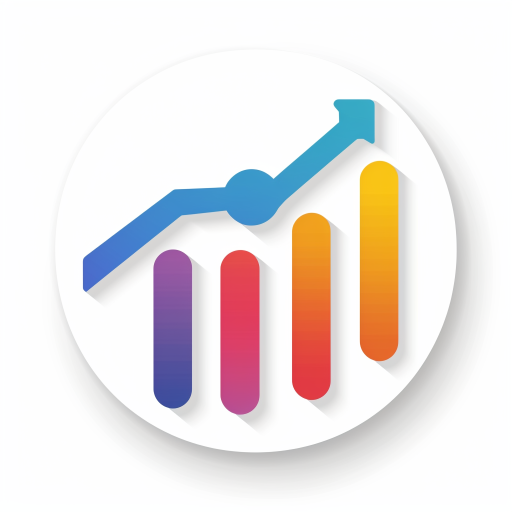Read Paper-AI-powered arXiv paper analysis.
AI-powered insights from arXiv papers.
Read arXiv papers using GPT, and feel free to utilize mind maps and other 5 tools to assist in the process.
Read paper "Attention Is All You Need"( https://arxiv.org/abs/1706.03762)
Related Tools

Research Paper Writing
Expert in crafting high-standard research papers.

AnalyzePaper
Takes in a research paper or article, analyzes its claims, study quality, and results confidence and provides an easy to understand summary.

论文文献总结
深入且客观的论文指导专家,提供详尽的学术分析

Research Papers
Academic and Scientific Research Papers .

論文要約くん
落合陽一先生の論文読み方フォーマットで論文を分かりやすく解説してくれます。論文を全文読み、詳細な解説を提供します。プロンプトはいりません、PDFかURLを送るだけです。

Research-Paper Analyzer
Gives critical analysis and evaluation of research papers, with easy to understand summary. (e.g. prompt: Analyze the attached research paper)
20.0 / 5 (200 votes)
Overview of Read Paper
Read Paper is a research assistant designed specifically to help users interact with and better understand academic papers, particularly those found on arXiv. Its core functionality revolves around breaking down dense research content into more digestible pieces, while offering additional tools to aid in comprehension, discussion, and visualization. The design of Read Paper is centered around enhancing the research experience by automating tasks like content extraction, summarization, and visualization. For instance, upon receiving an arXiv link, Read Paper will extract the paper’s key content, summarize it, generate a mind map, and provide thought-provoking questions for further analysis. This ensures that the user can efficiently grasp the main ideas of a paper and engage with it on a deeper level.

Key Features of Read Paper
Content Extraction
Example
Upon receiving an arXiv link, Read Paper extracts the core content from the paper and provides a concise summary within a 200-word limit.
Scenario
A researcher wants to quickly assess whether a newly published paper is relevant to their current work. By providing the paper’s link to Read Paper, they receive an immediate overview, saving time and helping them decide whether to delve deeper.
Summarization
Example
Read Paper condenses the main points of a research paper into no more than 5 key takeaways.
Scenario
A student writing a literature review needs to synthesize information from multiple papers. Instead of reading each paper in full, they use Read Paper to extract key points, allowing them to quickly gather the necessary insights for their review.
Mind Map Generation
Example
After extracting content from a paper, Read Paper can generate a mind map that visualizes the structure and flow of the research paper’s key concepts.
Scenario
An academic team working on a collaborative project needs to visualize the relationships between various concepts from multiple papers. By using Read Paper, they receive a mind map that helps them organize these ideas in a coherent way, aiding in discussions and further research.
Target Audience for Read Paper
Academic Researchers
Researchers in academia are one of the primary users of Read Paper. They often need to quickly assess numerous papers in their field to stay updated. Read Paper streamlines this process by offering summaries and visualizations, allowing them to focus on analyzing the most relevant information.
Graduate Students
Graduate students who are engaging in thesis or dissertation work benefit greatly from Read Paper. These students often need to navigate large volumes of literature, and the tool helps them efficiently extract the most important information, generate visual aids, and form questions for deeper understanding.

How to Use Read Paper
Step 1
Visit aichatonline.org for a free trial without login, also no need for ChatGPT Plus.
Step 2
Submit an arXiv paper link (e.g., https://arxiv.org/abs/...) to start retrieving and processing the paper's content.
Step 3
Wait as the tool extracts the paper's abstract, summaries, and additional resources like mind maps, key points, and discussion questions.
Step 4
Explore advanced options like generating mind maps, visualizing processes with Graphviz, or creating a mixed poster to visualize your thoughts.
Step 5
Use the email function to send essential details or insights from the paper to your colleagues or yourself for future reference.
Try other advanced and practical GPTs
Master AI 🦸♂️⚡️
AI-powered expert guidance for any task.
iterativer Prompt Generator
Refine your prompts with AI precision

Decreto de Desregularización de Milei
AI-powered guide to Argentina's deregulation

Midjourneyy Prompt Assistant
AI-powered prompt creation made simple.

Assistants to structured prompts
AI-powered structured prompt generator.
AI算命Plus
Unlock your destiny with AI-powered BaZi analysis.

MJ Prompt Generator
Elevate Your AI Imagery with Smart Prompts

The Justin Welsh Content Matrix GPT
AI-Powered Content Ideas for Your Brand

面试大师GPT-S
AI-driven mastery for every interview.

论文选题门诊
AI-powered thesis topic evaluation tool.
🎲📊 Ultimate Sports Bet Oracle 🏅⚽
Empowering Smart Bets with AI-driven Insights

Competitive Analysis GPT
AI-powered competitive insights for growth.

- Research
- Brainstorming
- Visualization
- Collaboration
- Study
Q&A About Read Paper
What is the core functionality of Read Paper?
Read Paper allows users to retrieve, summarize, and generate insights from arXiv papers. It provides key summaries, mind maps, and thought-provoking questions based on the paper’s content.
How do I submit a paper for processing?
Simply provide the arXiv paper link (starting with https://arxiv.org/abs/...) to Read Paper, and it will automatically extract the main content and generate summaries and visualizations.
What tools does Read Paper offer for deeper analysis?
Read Paper can generate mind maps, create Graphviz diagrams for process visualization, and design mixed poster images to represent key insights. You can also use the email feature to share findings.
Can I use Read Paper for non-arXiv papers?
Currently, Read Paper primarily focuses on processing arXiv papers. However, you can use the 'readwebpage' feature to extract and analyze information from other web sources.
What are some use cases for Read Paper?
Read Paper is useful for academic research, preparing literature reviews, creating visual representations of complex ideas, generating discussion questions, and organizing insights for writing papers.